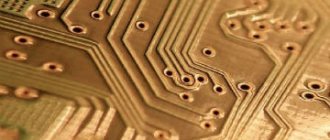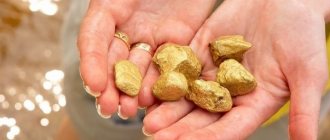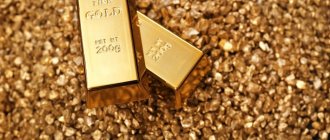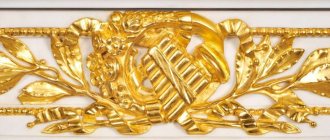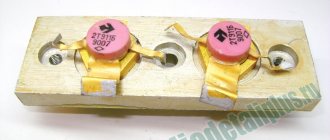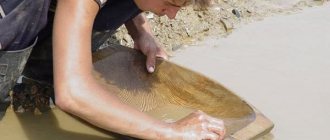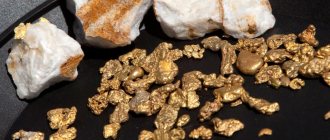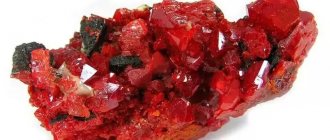Post updated: Jul 11, 2020
Gold is a noble metal, the mining of which began in ancient times. It may seem that this material is now of no practical value. But even in the modern world, you can see cases of brutal bloodshed that are directly related to this metal. This article will talk about where you can find gold and how you can do it.
A little history
If we go back to the times of Ancient Rus', it is reliably known that lands containing gold were not discovered at that time, even despite the fact that the territory of the state was quite vast. Ruler Ivan III was obsessed with the goal of finding the noble metal and even invited specialists from distant Italy for this purpose. But to his regret, only a small piece of gold was found, which was only enough to make a small cross.
The next seeker was Ivan the Terrible. For the sake of gold, he even conquered Siberia with the help of a huge army, but he never achieved the expected result. The same fate befell all the other rulers of Ancient Rus'. But the turning point in the history of gold mining was the coming to power of Peter I. It was under the power of this ruler that the first items of clothing and jewelry that contained gold and precious stones began to appear.
The first gold nugget was mined in 1945 by a Russian peasant from the Urals who was building a house on the river bank.
While digging a hole, he found golden grains of sand. The peasant immediately showed the find to his friend, who was also a silversmith. The master confirmed that the nugget was genuine. Experts arrived at the place where the grains of sand were found and began further searches. But unfortunately, they left with nothing. And only two years after the discovery of the deposit, a decision was made according to which it was necessary to continue the search and dig a mine. This decision turned out to be more than successful.
At the bottom of the dug shaft, a large amount of gold reserves were found, which marked the beginning of larger-scale mining of the metal.
The legal side of gold mining by private individuals
You can find a real nugget in the ground and even bring home a real nugget, but it is important to understand what the law says about this. The possibility of introducing changes to the legislation regulating the mining of ore containing gold crystals is currently being considered. At the same time, the service life of the areas where work is carried out is limited, and their size is also determined.
Interesting: in Australia, the procedure for obtaining a license takes a matter of seconds. Any citizen of the country can receive it, and the validity period of the document depends on the region (it is 1 year or a lifetime permit for gold mining is given).
Procedure for obtaining a license
Previously, only legal entities could engage in gold mining. Today, such an opportunity has appeared for individual entrepreneurs, but only if the business form is registered - individual entrepreneur. It is necessary to contact the territorial body of Rosnedra to obtain a license to handle the precious alloy. Ownership rights to a plot for a period specified by law can be obtained after submitting an application to participate in the auction. The documents required for this are presented. After winning, you can get a license.
Mining license
Conditions for precious metal mining
It is allowed to begin work after receiving a license, and its validity period varies:
- up to 5 years – for individuals;
- 20-25 years – for legal entities.
Where to look for gold
The question of how to quickly and efficiently find gold in the ground, as well as in what places this should be done, worries many seekers. In fact, there are many places where gold particles are present, but they are contained in very small quantities. If you are serious about searching for a large mine, then luck may turn your way, but the likelihood of this is negligible.
To find a more accurate gold deposit in nature, it is necessary to focus on indicators of the presence of this noble metal.
A small part of the precious metal can be found in sea water. According to experts, if you separate all the sea water from the gold reserves, you will get about 10,000,000,000 tons of metal. This figure is simply shocking. But at the moment there is not a single way in which this could be done.
Geology of the proposed gold deposit
First, you need to know the geological nuances of the area being explored: the type of rock, the structure of the soil, how far away is the vast deposit, etc.
Often, the closer the gold-bearing layer, the more promising the search will be, since deposits extend for many tens of kilometers in a certain rock. Or during a “collision of rocks,” where a significant increase in pressure and temperature produces yellow metal—it’s quite easy to find such places: the rock changes color.
Iron is the companion of gold
Black sand (hematite and magnetite) is the most common neighbor of gold sand. When washing river soil, you can often find black and yellow particles. Therefore, sand with black, red or orange splashes is always a sign of gold.
It is pure precious metal that can rarely be found in nature. Most often, gold is found with many impurities, from which the metal will then have to be purified. The most common place where you can find pure gold without impurities in large quantities is in quartz beds.
Under the influence of natural elements, such as wind or rain, layers can be destroyed. As a result of this process, a solid piece of gold nugget is formed. Also, gold reserves can be deposited in several types:
- Eluvial deposits;
- Residual deposits;
- Bottom sediments;
- Terrace deposits.
Residual deposits can be observed directly near the vein itself, which has been subjected to physical or chemical influence. Eluvial deposits are most often located at the foot of mountains.
This is what quartz layers look like.
Terrace deposits are in most cases found at the bottom of the river. After a certain time, the river erodes the land, as a result of which an additional bottom is formed. The old bottom rises above ground level, which is why it is called a terrace.
The terraces, which are several hundred years old, contain a very large amount of gold reserves. Bottom sediments form at the bottom of rivers in the form of precipitation. With the help of rain, gold moves along the river bed.
Ore development.
Today, the process of mining gold deposits is not much different from the extraction of all other metals and ores. First, a deep shaft is made, and then huge pieces of ore are lifted to the surface, which contain what started all these searches and excavations. At the final stages, gold should be separated from all unnecessary elements and impurities. To do this, the metal is ground to a powder state.
Gold content of quartz
Quartz is the most common mineral and forms in veins with many metals and minerals. In the search for the noble yellow metal, it plays a major role because the appearance of quartz can reveal the location of the gold. To correctly read quartz, knowledge of the properties of the gold-bearing sample is necessary. This mineral comes in a variety of colors and shades; it can be transparent, black, white, or gray. You can search for gold in quartz in several types:
- corn;
- nest;
- veins;
- germination;
- invisible dispersive.
If ore minerals were in quartz, but were leached, then the quartz has signs of sponginess. When the process of sulfide decomposition occurs in a gold-bearing vein, quartz crystals acquire yellow, cherry-red, or shades similar to them, which indicate that the mineral is fermented. If a prospector in search of yellow metal sees banded quartz with powdery layers or with the inclusion of tourmaline and sulfides, it means that representatives of low-temperature or high-temperature layers are somewhere nearby. Such zones may contain gold.
Searching for gold in Russia
There is practically no exact answer to the question of how to find gold in Russia even today. The most promising regions for searching are the Urals, Chukotka, Magadan, and Amur. It was in these places that nuggets were discovered, weighing 16 kilograms. Similar finds are still in the memory of local residents.
But before you go looking for metal, you need to find out whether it is in a particular place. All the necessary information can be provided by geologists or indigenous inhabitants who are well versed in the given territory.
Very often, the discovery of gold deposits is mentioned in newspapers, so in order to collect as much information as possible, you should turn to archival data.
Industrial mining sites.
There are also special geological funds that collect information about gold mining in a particular region. Such funds can be of great help in advancing the search for a profitable mine.
If the places where gold reserves were found weighing 50 grams or more have become known, then nuggets several times heavier can be found there.
Based on everything that was said above, it should be concluded that before going to a specific region in order to start searching for precious metal there, you need to carefully check all the data, analyze the information, and view all photos and video materials.
Composition and impurities of nuggets. Natural electrum alloy
The formation of precious metal particles cannot be contained in a pure form; they always include impurities:
- iron;
- mercury;
- bismuth;
- copper;
- silver, etc.
Most often, nuggets contain silver (the most significant proportion). Its combination with gold affects the color of the formation of precious metals - they become greenish. This alloy has its own name - electrum. The content of other metals is minimal.
Gold clusters
How to look for gold correctly
Finding gold is a very long process that can last for years. It is unlikely that in the first days of searching the digger will find something worthwhile. In order to somehow speed up this process and make it more productive, it is recommended to study a large amount of literature that can teach you how to properly organize your searches.
It has already been said that gold is found in quartz strata. To detect them, you need to pay attention to certain signs that are characteristic only of such deposits.
Necessary tool
Attentiveness, geological knowledge and a metal detector can help in the search. This equipment is quite expensive and will quickly pay for itself, but not all models will cope with the task. Moreover, you need to know how to use and set up a metal detector, since it is very sensitive to the soil, which itself will create interference. The metal detector detects large nuggets at shallow depths (up to 1 m), and the smallest ones at a depth of up to 15 cm.
A special feature of working with such products is its excessive sensitivity, which is caused by a large amount of minerals and iron in the soil. The device should not be configured for a specific type of metal; it must be operated in the mode of detecting all metals without exception. Iron, like gold, produces the same sound, so it is better to stop and test the ground rather than continue searching for gold to no avail. It is necessary to listen to the soil using headphones, so you should be extremely attentive to changes in noise.
The number of false signals coming from the ground depends on the sensitivity level setting. When the sensitivity of the metal detector is low, a person hears deeper sounds of ground testing. The result of the work also depends on the ground balance setting. Ideally, the headphones will display background noise as the metal detector probes the soil, the sound may decrease or increase.
To adjust, you need to turn the knob responsible for ground balance. Every 5-7 m you will have to adjust this function, since the mineralization of the soil may be different. To search for large-sized gold on fairly strong mineralized soil, it is necessary to use a negative setting, which will reduce the sensitivity of the metal detector to small nuggets. And, conversely, when searching for small nuggets, the adjustment is made in a positive direction. The best tuning method is a small sample of gold or lead.
When listening to the soil, the metal detector coil should be kept as close to the surface as possible. When a signal occurs, listening is carried out in all directions from the possible location of the nugget. If gold is present, the signal will be heard in all directions, and if the signal is only triggered in a certain direction, then it is not gold. The last step of the test will be to raise the coil above the intended location. If the sound suddenly fades away, it means the signal is false, and this place does not even contain metal.
Gold dredge
After many years, the technologies used to mine gold in ancient times have not changed much. All that has changed is the work of mechanized machines instead of human labor.
Today, few people are engaged in gold mining using trays, since this method is no longer relevant and widespread. But the technology has survived. Today, many people use a huge machine that has a large number of trays.
A dredge is a device used to flush water from a river. It is this huge and noisy structure that is capable of extracting precious metal from river rock. Although this method is very effective and profitable, it has a very negative impact on the environment. After dredging, river beds are left in a deplorable state. But in order to know how to find and then safely extract gold from the river, it is recommended to use dredging as the easiest way to mine gold.
How can you mine Au?
To do this you will need the following equipment:
- The tray is better if it is blue: against this background, the yellow grains become especially noticeable.
- The gateway is the second stage of treatment from sand and other impurities, as it has special inserts on which heavier Au settles, and everything else is washed out.
- Tools – gold is mined in cracks using a pick or pick.
- Miniature gold dredge. Lightweight portable floating gold mining equipment. A budget option that makes it easier to search for aurum in rivers, it passes through up to 10 cubic meters of water per hour. With its help, panning for gold will be easier.
Gravitational differentiation
This gold mining technology involves grinding rock that contains the metal. After these rocks have been loaded onto trucks, they are taken to special mills. Inside these mills, huge stones crumble under the pressure of large balls made of strong cast iron.
After crushing, this entire mass is placed in a centrifuge, in which the earth and stones are separated from the pyrite. Pyrite contains particles of valuable metal. Very often the shine of the mineral is mistaken for real gold.
Extraction technologies
There are fewer deposits and they are being depleted. Therefore, the ability to separate gold from ore is especially valued. Here is a list of the best techniques:
- amalgamation;
- heap leaching;
- etching.
Methods for extracting gold from river beds
The sifting and washing method involves passing river sand through a sieve, tray or burlap by hand. Only Au particles larger than a grain of sand remain in the dish.
Mechanisms - dredgers, pumps, screens - dig the mass from the bottom, deliver it to the shore and quickly process it, sifting out the excess. At the same time, the amount of manual labor and the time spent on it are reduced.
